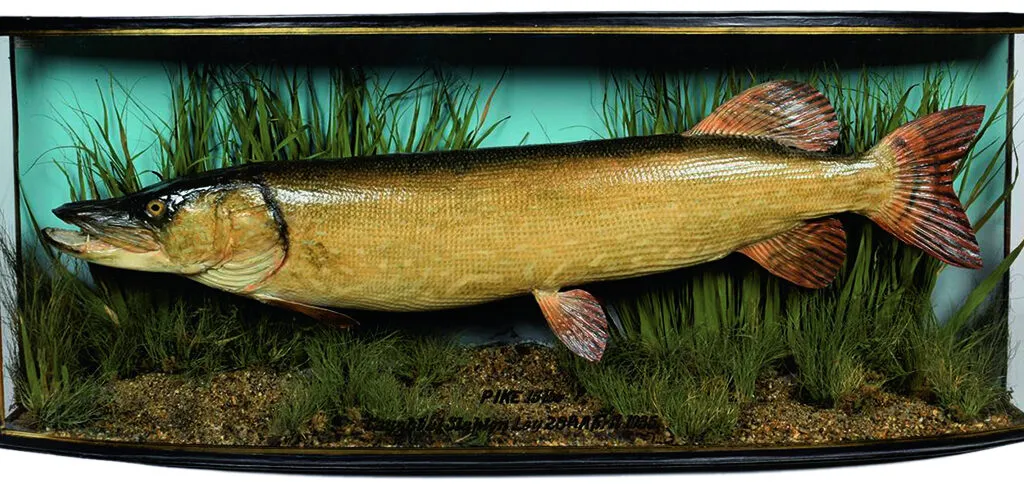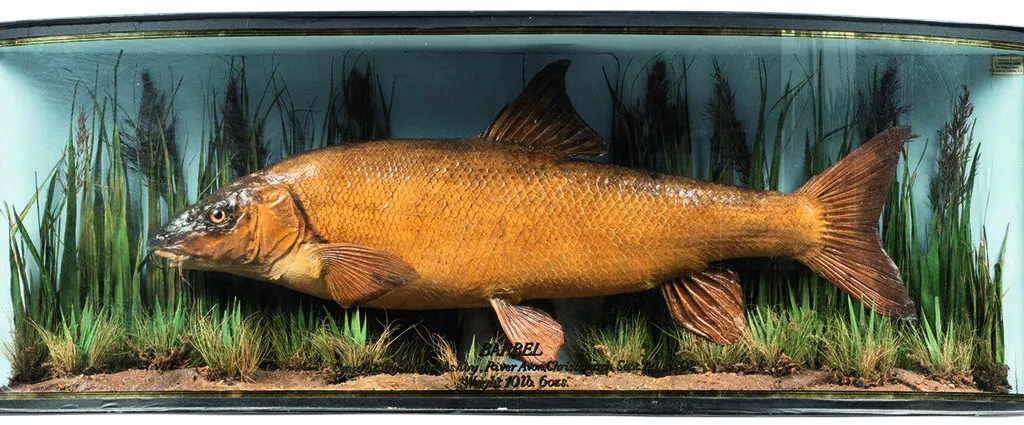‘I have laid aside business, and gone a’ fishing’. So wrote Izaak Walton in The Compleat Angler, first published in 1653. Sitting at my desk, piled high with books, papers, and a jumble of computer equipment, I can’t think of a more appealing sentiment.
The Victorian and Edwardian gentry were keen on fishing, and they adored their ‘stuffed’ fish too; the perfect way to show off the one that ‘didn’t get away’. In the late 19th century, any English country house or Scottish castle worth its salt had a taxidermied salmon or pike tucked away in the boot room.
Traditional piscatorial taxidermy is a fine art, perfected by the greatest of the Victorian fish taxidermists, John Cooper of Radnor Street, Islington. The first John Cooper trained as a watchmaker – the most precise of trades – but in 1825 used his considerable skills to move into the esoteric world of taxidermy. In 1872, a son succeeded to the business and became a specialist in fish taxidermy, the firm becoming John Cooper & Sons after 1896. In 1933 the business was taken over by W. B. Griggs, another leading taxidermist, and the premises moved to Hounslow in Middlesex. The company carried on trading under the name of Cooper until its demise in 1960.
You might also like collecting decoy birds
Cooper perfected the art of skilful and delicate fish preservation. A craftsman removed the skin (including head and tail) and preserved it in a special mixture of camphor, arsenic, white soap and chalk. The next step was to stretch the skin over a shaped mould, paint it with varnish and shellac (to give a wet appearance) and insert a realistic glass eye. Finally, the fish was mounted in a glazed, wooden display case with a naturalistic setting, to give the impression that the fish was swimming in water near the bed of a river or lake.
The earliest cases used flat glass, but bow-fronted cases became popular in the 1870s. The earlier Cooper cases had pale blue backgrounds with reeds. In the 1920s, fish began to be painted (as the preserved skin loses its original colour) and, over time, the background colour moved to an aquamarine green. From the mid-20th century, Cooper (under Griggs’ management) used conifers (rather than grasses) for reeds, and the fish became less subtle, painted with a heavy emphasis on the scales.
Another legendary taxidermist of the period was P. D. Malloch of Perth, who also dealt in fishing tackle. They specialised in beautifully painted plaster and wooden fish models, displayed within their signature barrel-fronted display cases. In October 1922, Miss Georgina Ballantine landed the heaviest rod-caught salmon in the British Isles; coming in at a monster 64 pounds, half Georgina’s diminutive weight. Malloch copied the fish, and the replica can still be seen today at Miss Ballantine’s cottage on the Glendelvine estate by the River Tay. The fish itself was devoured by patients at the Perth Royal Infirmary. Malloch’s fish trophies are desirable: a salmon trophy from 1923 fetched £4,320 at Bonhams in 2010.
You might also like collectors share their favourite antiques
Today, piscatorial taxidermy is highly collectable. Mounted fish preserve well and are less susceptible to insect attack, making them an attractive collecting proposition. Value depends on condition, aesthetic appearance, quality of the setting, rarity of species and, as ever, size matters. And ‘signed’ cases by the leading taxidermists of the day will always command a premium: Rowland Ward of Piccadilly, Peter Spicer of Leamington Spa, W. F. Homer of Forest Gate, Williams & Son of Dublin, and W. Barnes of Barnsbury.

The most desirable cases on the market are bow-fronted, which gives a better impression of the fish swimming through the water. Cases are often inscribed on the glass in gold leaf, providing interesting information about the where and when of a prize catch. That said, the market is known for its fakes, and unscrupulous individuals have been known to apply labels from a famous maker to less inspiring examples.
It’s a complicated field, and aspiring collectors are advised to buy from a reputable dealer or a respected auction house with a knowledgeable specialist: a magnificent 1935 15-pound northern pike by John Cooper & Sons fetched £800 at Tennants, and a 1902 barbel in a bow-fronted case made £700 at Summers Place Auctions.


